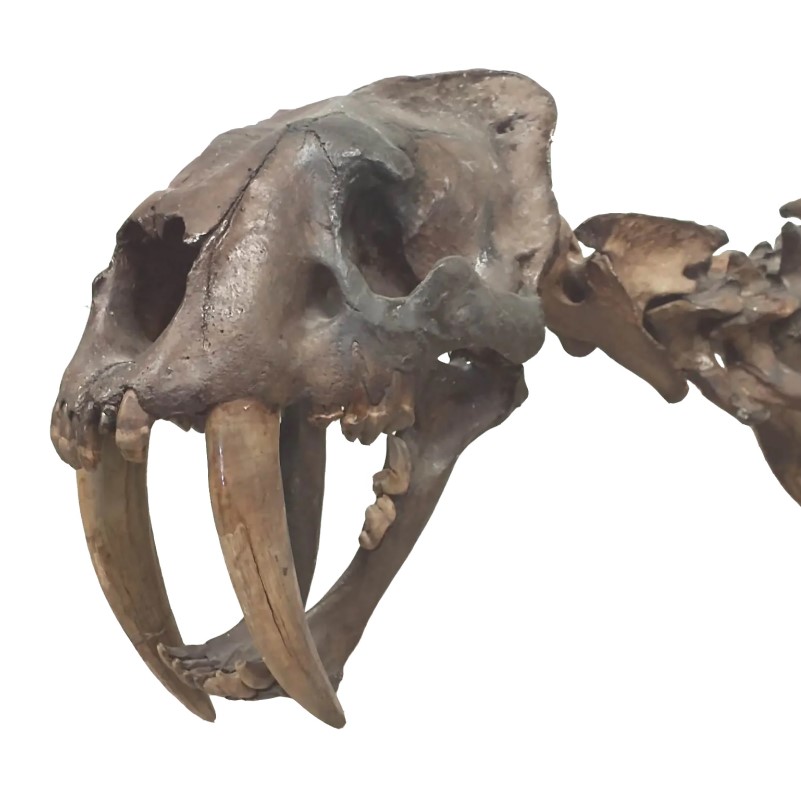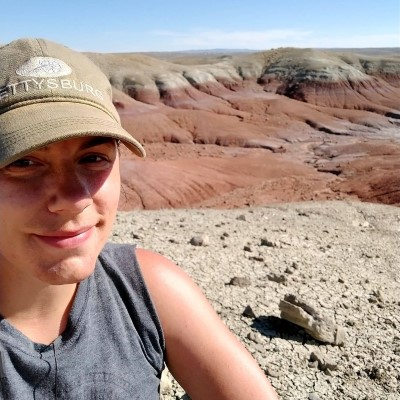Dr. Alex Shupinski tells us about the research published in her new Proceedings B paper, a study that used functional diversity to describe how the structure of North American mammal palaeocommunities changed across the Cenozoic.

Mammals greatly influence energy flow and habitat structure in modern terrestrial ecosystems. A new study in Proceedings B examined three aspects of ecological function on the local and continental scale. Lead author, Alex Shupinski, from South Dakota State University, tells us more about this work.
About the paper
Modern mammals battle a plethora of disturbances driven by human activities and may be entering a sixth mass extinction. Human activities have heavily modified the diversity, abundance and richness of mammal communities, changing their dynamics and resiliency. Conservationists strive to maintain ecosystem services that are reliant on the structure of biological communities. However, to successfully do this, we need to better understand the effects of environmental, ecological and climatic disturbance before widespread human impacts.
How did mammals assemble into communities across evolutionary timescales? Were the dynamics of mammalian communities impacted by disturbances? We addressed these questions by using 66 million years of North American paleoecological data to explore broad, overarching patterns of mammal community structure at the continental and local spatial scales.
We chose to evaluate community structure using functional diversity, a statistical approach that quantifies changes in community structure using mammalian traits. The use of ecological traits makes functional diversity more directly related to ecosystem services. Functional diversity can also be broken down into independent indices to examine different components of community structure. For example, we used functional richness, functional evenness and functional divergence. These indices provide information about changes in the diversity, redundancy and uniqueness of ecological roles within ecosystems.
We found that functional diversity indices were not static but were in a constant state of change throughout the Cenozoic. In fact, indices fluctuated independently from one another and varied among spatial scales, except following the extinction of the non-avian dinosaurs. The first ~10 million years following the extinction saw a synchronous rise in functional indices, continentally and locally, demonstrating the unique recovery dynamics that can follow major disturbance. Furthermore, the synchronous changes in functional indices may be an ecological signal that can distinguish mammal communities experiencing the greatest disturbance. If this signal is evident in modern communities, it would allow us to better focus conservation efforts on communities at greatest risk.
Conservation paleobiology is a young field that stresses the concept of using the past to better understand the present and better predict the future. We believe that exploring and communicating information about past ecosystems to the public can encourage a greater sense of urgency about the biodiversity crisis occurring today.
Meet the authors
Alex Shupinski (pictured here in the  Bighorn Basin of Wyoming) is a postdoc with the E6 RCN group . She received her PhD at the University of Nebraska-Lincoln under the advisement of Dr. Kate Lyons. Her research focuses on exploring Cenozoic mammalian dynamics across evolutionary timescales and the effects of biotic and abiotic factors on community structure to better predict future ecological changes.
Bighorn Basin of Wyoming) is a postdoc with the E6 RCN group . She received her PhD at the University of Nebraska-Lincoln under the advisement of Dr. Kate Lyons. Her research focuses on exploring Cenozoic mammalian dynamics across evolutionary timescales and the effects of biotic and abiotic factors on community structure to better predict future ecological changes.
Kate Lyons is an Associate Professor in the School of Biological Sciences at the University of Nebraska-Lincoln. She received her PhD from the University of Chicago and studies the effects of climate change and biodiversity loss on mammal communities across space and time.
Peter Wagner is a professor in the Department of Earth & Atmospheric Sciences and School of Biological Sciences at the University of Nebraska, Lincoln. He received his PhD from the University of Chicago and works largely on birth-death-sampling methods for assessing macroevolutionary & macroecological hypotheses in the context of plausible phylogenies.
Felisa Smith is a Distinguished Professor at the University of New Mexico. She received her PhD from the University of California and has focused much of her work on patterns of body size across space and time. More recently she has focused on conservation paleoecology, specifically studying what the past can teach us about the effects of biodiversity loss and climate change on organisms.
What was your experience like publishing in Proceedings B?
We found that the publishing experience with Proceedings B for this manuscript was a straightforward and speedy process. We were appreciative of the editor’s and reviewer’s comments and suggestions and feel that they improved the quality and interpretability of our research. We were also very satisfied with the ease of communication with the journal regarding extensions and questions. In addition, Dryad provides a self-explanatory process for the submission of supplementary materials. We greatly appreciate the opportunity to publish in this journal and appreciate the uncomplicated process.
Proceedings B is looking to publish more high-quality research articles and reviews in palaeobiology. If you have an idea for a review, we strongly encourage you to submit a proposal by completing our proposal template and sending it to the journal. More information about the journal and the submission process can be found on our website.
Image credits:
1 – Smilodon displayed at the University of Nebraska State Museum exhibit. Taken by Alex Shupinski and edited by Nick Shupinski.
2 – Alex Shupinski





